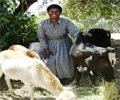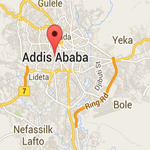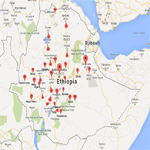Policy Banks, Proper Allies in Effort to stimulate Economy
(By Atsebaha Abay, This email address is being protected from spambots. You need JavaScript enabled to view it.)
These days there are a number of initiatives that mobilize billions of funds to address different socio-economic problems. Such funds are private sector development fund, competitiveness facility fund, covid-19 facility fund, green energy facility fund, etc. and are managed by different organizations mainly banks. Other types of funds such as economic stimulant fund are also poured by governments into banks in the name of saving jobs and improving income of the poor. It is common to read in financial literatures that banks are the lifeline of modern economies. However, based on their ownership structures, banks pursue different goals. Everywhere in the world, private banks are established by the rich and are primarily aimed at mobilizing savings from the public and channel it to the riches (i.e., for investment) and bring profit to the owners. Many of these banks tend to finance working capital and other risk free short term loans. That is why banks and other financial institutions are blamed by many as instrumental for making the rich getting more richer and widening the gap between the rich and the poor. This shows that all banks are not equal in their contribution for development.
On the economic side, governments are tasked with creating stable and well-functioning macroeconomic environment. To ensure these, governments develop and implement various macro-economic policies among which are the monetary policies. In turn, monetary policy specialists are aimed at achieving sustainably stable inflation rate, stabilizing interest rate, boosting long-term investments to attain full employment and inclusive growth. That is why monetary policy authorities (governments) establish policy banking (such as the Development Bank of Ethiopia, aka DBE) to bring change in the real economy through, among others, furnishing fresh and low cost loans to key economic sectors to bring faster and sustainable growth: creating new jobs, boosting foreign currency earning and financing SMEs to flourish and serve as a base for industrial development of the country. That is why policy banking is considered as pro-poor ensuring inclusive growth.
The effects of Covid-19 in the Ethiopian economy are just starting and will surely get into a serious crisis soon. According to the study made by the Ethiopian Job Creation Commission, Covid-19 has destroyed 330,000 jobs in just two months (last March and April) and will increase to 1.5 million (in medium scenario) in six months. Worse is 28% of those who lost their jobs have reported they have no other source of income. The same study indicates that if Covid-19 stays in towns and cities of Ethiopia for six months, 1.9 million micro enterprises would lose their income by 50%. Further, 1.41 million out of the 7.0 million employees working in the manufacturing and construction sector would lose their jobs in just six months.
We have also other quite worrisome internal problems that must be dealt with immediately: public unrest, political instability, huge national debt and poor tax collection due to mainly political instability and Covid-19. On top of these, we have over ten million youth who faced an extended period of un-employment that all fuels to the existing problems. This year, 30 million citizens who are victims of both man-made and natural disaster are food insecured. These will surely leave a long lasting scar with huge macro-economic repercussions. In such a situation it is the poor who suffer the most since they lose their jobs and unable to finance their daily expense due to soaring cost of living.
Amidst all these problems, the Ethiopian government and international development partners are implementing various interventions among which are the capital (liquidity) injections to the local banks. Recently, as part of the fight against Covid-19, development partners provided over Birr 28.6 billion support of which IMF 13.8 billion Birr, African Development Bank Birr 5.4 billion, World Bank Birr 10.4 billion including the assistance given under Ethiopia Covid-19 Emergency response Investment Policy Financing (under Fast-Track Covid-19 Facility), France Birr 0.54 billion. Further, the government has borrowed Birr 20.0 billion from local sources. Using these local and international funding, the government is implementing a number of interventions including the Birr 15 billion stimulus fund (capital injection) provided to the local banks. All well and good, but pouring in money to the banks is only part of the solution. Thus, government needs to put appropriate regulating mechanism in place and chart-out on how to and to which bank should lend its money.
During crisis, it is common to see governments providing billion and trillions of long term loans to banks in the name of stimulus fund at a zero or nearly zero interest rates. Yet, banks do not provide their plan of interest rate discount, reduced service fees and bad debts write-off plans to government nor do the latter controls the banks on the utilization of the stimulus fund. On the contrary, banks use this money to provide fresh loan at high interest rates and tap the profit to their shareholders and bonuses to their management without fighting the intended economic adversity.
As mentioned above, the Ethiopian government has borrowed Birr 20.0 billion from local sources at market rates and lent Birr 15 billion to the local banks at zero interest rate to help them fight against Covid-19. At the minimum deposit rate of 8% (for time deposit), the government is foregoing Birr 8.0 billion in five years which could have been used for construction of clinics, hospitals, roads or for the implementation of safety net programs to engage the poor. Thus, it is fair to believe that such intervention is a transfer of free money from the poor to the billionaire banks.
For this reason, when the government provides such money to the banks, it should think of which bank is creating more jobs, or earn high foreign currency earning, etc. per loan to compensate the jobs and other socio-economic costs forgone. Other socio-economic criteria such as the type of loan (short and long term loans, working capital finance, etc.) which the banks provide, their operational scale in providing loans to SMEs and rural finance to help the rural poor including women and youth should be taken into account. Otherwise, there is no justifiable reason for the government to follow a blanket rule for all banks in applying the funding intervention. And so, the amount of Birrs given to banks in the name of stimulus fund should equate to the loss that banks incur, for instance, in the fight against Covid-19 and to the number of jobs they created and to the foreign currency they saved or earned. At this point, it makes sense to ask how much do the Ethiopian banks have been affected by Covid-19 in the last several months. The answer for this shows that this year all the 16 private banks have earned an aggregate of 18 billion profit and this is higher by 4.3 billion compared to their profit of last year. Out of the 16 banks, 10 have registered more than one billion profit each. So, are they really affected by the effect of Covid-19 and do they really need any subsidy in such magnitude from the poor may be questionable?
Taken together, unless banks do have a clear plan on how to use the money (stimulus fund) to fight the inevitable crises and help in bringing back the economy, it would get into their pockets. Therefore, the government should be wise in allocating how much Birrs to be given to which bank. The government should make a wise decision of where to invest its money to bring real investment and to bring its citizens out of the crisis.
As a policy bank, the Ethiopian Development Bank have been supporting priority sectors and provide loan to new projects at a very low interest rate, for instance at 7.5% for SMEs, urban consumer associations, Rural Saving and Credit Cooperatives (RSACCOs and SACCOs) as well as microfinance and at 11.5% for the priority sectors that are rich in creating new jobs. In its SME and rural finance windows, DBE reaches out to the missed middle as well as to the neglected poor including the youth and women through both lease financing and project financing.
Also, DBE’s experience in fund management is well-regarded. It has extended experience in successfully managing funds such as MDRE & EEPs (Market Development for Renewable Energy and Energy Efficient Products) fund, REF (Rural Electrification Managed Fund), Women Entrepreneurs Development Program (WEDP) fund, SMEFP (Small and Medium Enterprises Financing Project) fund, KELIFA Fund, RUFIP (Rural Financial Intermediation Program) fund, Shewa PADEP fund, Fourth Livestock Development (FLD) Fund, Carbon Initiative for Development fund and other numerous funds that are sourced from reputable international development partners.
(The writer, Atsebaha Abay, is a banking and financial services expert and currently serving DBE as Director of CMRD III)
















